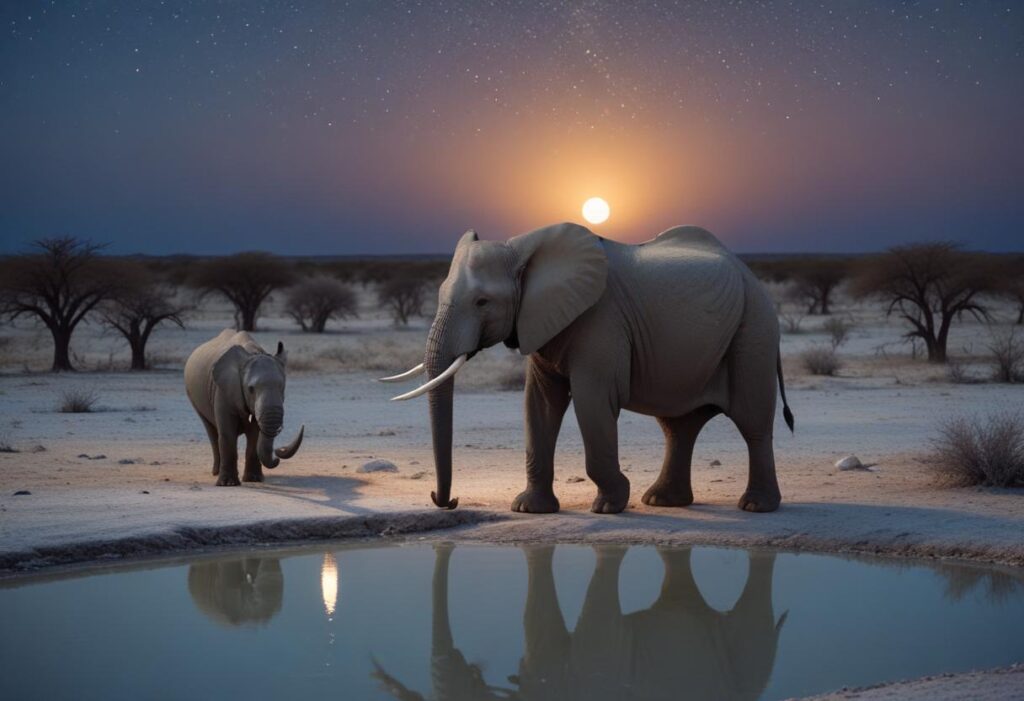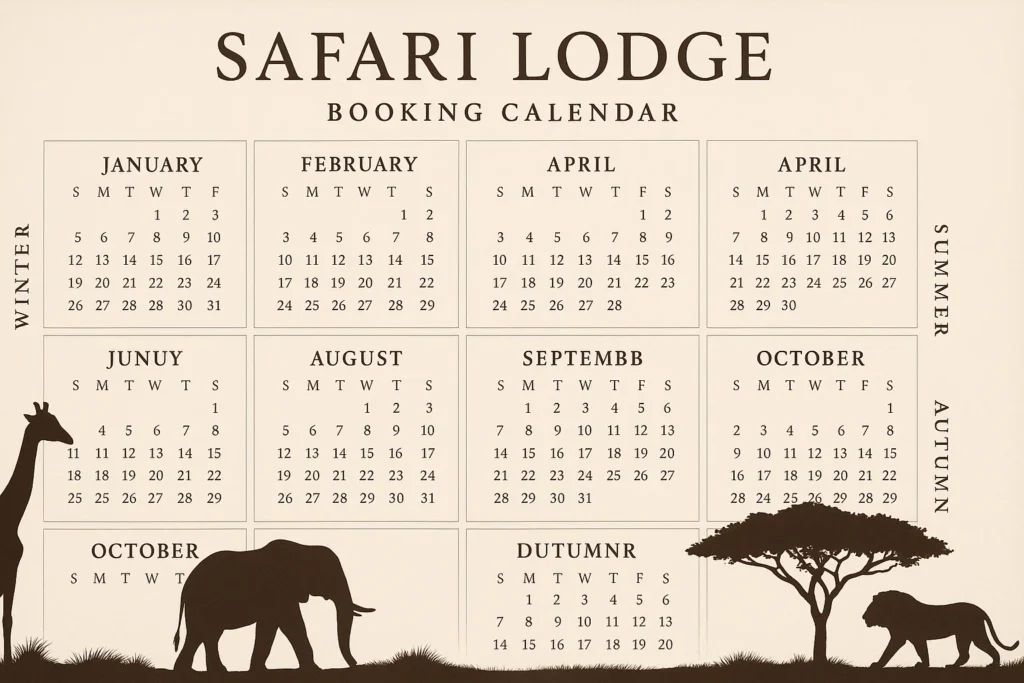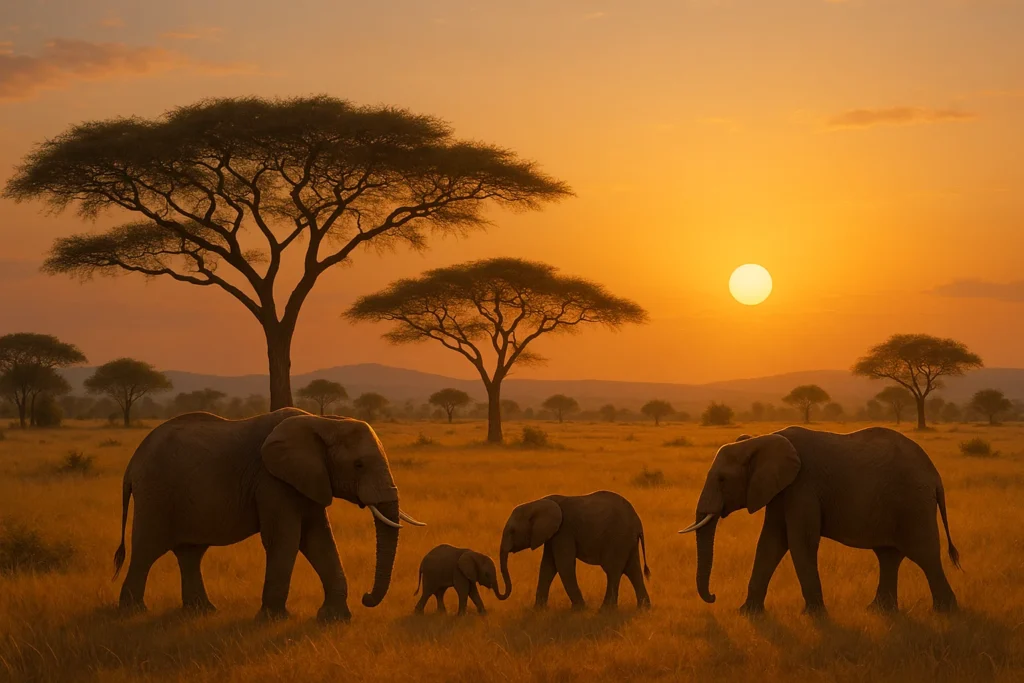The Big Five—lion, leopard, elephant, rhino, and buffalo—are the most iconic animals to spot on an African safari. But in Etosha National Park, you’ll only see four of them. Why? This guide explains the absence of buffalo and highlights the standout species you can encounter in this extraordinary Namibian reserve.
What are the Big Five?
Originally coined by big-game hunters, the term refers to the five African animals considered most difficult and dangerous to hunt on foot:
- Lion
- Leopard
- Elephant
- Rhinoceros
- Buffalo
Today, for most safari-goers, the term simply signals the ultimate wildlife checklist—and Etosha offers excellent chances to tick off four.
Why there are no buffalo in Etosha
Cape buffalo are the only Big Five species not found in Etosha. But why?
The answer lies in habitat and ecology:
- Etosha’s semi-arid environment lacks the perennial rivers, swamps, and lush grazing pastures that buffalo prefer.
- Cape buffalo depend heavily on abundant water sources and dense vegetation, unlike other members of the Big Five that have adapted to drier conditions.
- The park’s dominant features—like the massive salt pan and seasonal waterholes—support more arid-adapted species such as springbok, oryx, and black rhino.
So while Namibia does have buffalo, they’re mostly found in the far northeast, in wetter regions like Bwabwata and Nkasa Rupara.
The Big Four you can see in Etosha
1. Elephant
Etosha is home to some of Africa’s largest elephants, both in size and tusk length. These desert-adapted giants often appear coated in white dust from the pan’s minerals.
- Where to spot them: Waterholes near Okaukuejo, Halali, and Namutoni—especially during the dry season.
- When: Mid-morning to afternoon, when they come to drink and bathe.
2. Lion
Etosha’s lions are confident and often active near roads and waterholes.
- Best viewing areas: Okondeka (near Okaukuejo), Nebrownii, and Halali plains.
- Behavior: You may see them sleeping during the heat, but early mornings often reveal hunting or territorial movement.
3. Leopard
These elusive cats are harder to spot, but not impossible with patience.
- Best chance: In the denser woodlands near Halali and Goas waterhole.
- Tip: Scan tree limbs and shaded areas—leopards often rest high up during the day.
4. Rhinoceros
Etosha is a stronghold for black rhinos, one of Africa’s most endangered species.
- Black rhino: More common than white rhino in the park. Shy, but often visible at night waterholes like Okaukuejo.
- White rhino: Reintroduced in some private reserves bordering Etosha, like Ongava.
Etosha remains one of the best places in Africa to see black rhino in the wild.
Other standout species in Etosha
Though buffalo are absent, Etosha more than makes up for it with:
- Plains game in large numbers: Springbok, zebra, wildebeest, oryx
- Cheetah sightings: Especially in the eastern regions
- Hyenas and jackals: Often seen scavenging or on dusk patrols
- Birdlife: Over 340 species, including flamingos during the wet season
What to expect for wildlife photography
Etosha’s open plains and clear sightlines make it a dream for wildlife photographers.
- Waterholes create perfect stage-like settings for dramatic shots.
- Morning and late afternoon light provides golden tones and long shadows.
- Carry a long lens (200mm+) for distant sightings, but keep a wide-angle handy for close encounters at camps.
Conclusion
While Etosha National Park may not offer the full Big Five, its Big Four sightings are some of the best in Africa—especially for rhino and elephant. Add in open savannas, dramatic skies, and prolific wildlife, and it’s clear why Etosha holds its place among Africa’s top safari destinations. Come for the Big Five, stay for Etosha’s wild and unique beauty.
FAQs
Head to northeastern parks like Bwabwata or Nkasa Rupara, which have wetter habitats suitable for buffalo.
Etosha is known for black rhino. White rhino are mainly found in neighboring private reserves.
Mid to late dry season (July–October), when animals depend heavily on waterholes.
No safari can guarantee sightings, but four of the five are commonly seen with patience and time.






